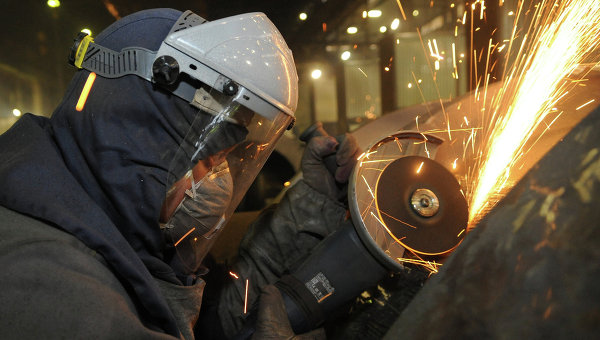
Published: January 12th, 2017
Russian heavy machinery may disappear completely, and the country runs the risk of absolute dependence on imports, says the Ministry of Industry in the project sector development strategy until 2020. To counter this trend, the Ministry proposes to support enterprises preferential loans, and to limit imports in order to encourage foreign producers to equipment localization. According to experts, evaluations and goals of the Ministry of looks suspended, but the main question is, what budget will actually count the newly-date in terms of import substitution industry.
Ministry of Industry issued a heavy engineering project development strategy until 2020 and until 2030. The Ministry recognizes that the development of the industry is "the inertia scenario in its most pessimistic variant", and there are risks of extinction of Russian heavy engineering and total dependence on foreign supplies of equipment. Today, the contribution of the industry (it includes the mining issue, metallurgical and lifting equipment) in the country's GDP is less than 1%, loading companies on average - less than 30%. According to ministry's estimates, in 2016 the Russian heavy equipment output growth of 16% to 168.6 billion rubles, in general, the domestic market also grew -. 2.5%, to 262.8 billion rubles. The share of imports was around 40%, share of exports in total output fell by 2.1 p. P., To 7.1%.
The document stresses that the current capacity utilization is impossible to obtain sufficient finance for development, the poor condition of the fixed assets hinders the emergence of new products and to improve the efficiency. Investing only in maintaining, but not the development of canned technology at the level of 1960-1980-ies, recognizes Ministry of Industry. A similar situation exists in the machine tool industry - about its existence only after the government recalled the introduction of international sanctions. Now heavy industry is about 50% of total imports in the Russian Federation.
The key objective of the strategy - by 2030, Russian producers should occupy not less than 70% of the domestic market. The share of imports is expected to drop to 35% by 2020, while the share of exports in the issue - to grow from 7% to 12%. To achieve this, the Ministry of Industry as a whole offers the classic measures. The main problem - the lack of budget financing - proposed to solve due to subsidized bank lending. In addition, the strategy provides for the imposition of restrictions on the purchase of Russian customers of foreign products. It is proposed to introduce a system of "admission quota" for foreign equipment, which has no analogues in Russia, at the same time will take into account the percentage of localization of equipment. On the basis of this index can be lowered and the tax burden, the State may take over the insurance potential customer losses at the time of finishing the new equipment.
Industry and Trade Ministry propose to solve technology deficit, in particular, through the purchase and adaptation of foreign technology. Separate focus Industry and Trade Ministry makes to the development of exports. In addition to the related preferential crediting of exports and various subsidies are available, and non-trivial moves such as the creation of the Russian EPC-contractor on the analogy of "Atomstroyexport", which could use Russian equipment in building sites abroad.
However, the answer to the key question - how much budget will be allocated for the implementation of the strategy - is still unknown. Following the approval of the Ministry of Industry Strategy will have in six months to submit to the government a plan of action, which is likely to be given funding. SBS Consulting Consultant Dmitry Babanskii notes that the strategy - "a higher-level document," which is more of a conceptual nature. The proposed measures, in principle, allow us to solve all complex problems, but it is necessary that they receive "decent budget justification." Experts expect that the focus of support measures will shift from industry to the universal: subsidizing interest on loans, the cost of R & D, production and marketing of pilot batches. Strategy Objectives Mr. Babanskii considered "suspended", as laid relatively modest market growth and a moderately optimistic regarding the issue (a doubling in 15 years - to 307 billion rubles by 2030.). In his opinion, it is safe to introduce anti-dumping and safeguard duties (WTO allows), since imports in some areas is frankly dumping character.
Yana Tsinoeva
Source: Kommersant
Latest news
07.05.2018 MEF-2018: debate "Cultural policy: between individual freedom and the interests of society?"
07.05.2018 MEF-2018: Conference No. 8
07.05.2018 MEF-2018: Conference No. 4
07.05.2018 MEF-2018: Conference No.3
07.05.2018 MEF-2018: Conference No. 2
07.05.2018 MEF-2018: Conference No.1
26.04.2018 McConnell Discusses Information Warfare
20.04.2018 MEF-2018: closing plenary session
17.04.2018 Mr. Freysinger: «Skripal’s case» for relationship between Russia und European Union?
